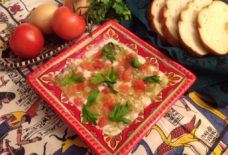Palestinian artist Khaled Jarrar creates sculpture from the U.S.-Mexico border wall
Palestinian artist Khaled Jarrar has created a sculpture from a piece of the U.S.-Mexico border wall. Inspired by the politics of exclusion, the sculpture is a symbolic gesture of solidarity, which draws upon the similarities between the wall separating Israel and Palestine.
Carolina A. Miranda
Los Angeles Times
Palestinian artist Khaled Jarrar made a journey in January along the U.S.-Mexico border, from San Diego/Tijuana to El Paso/Juarez. In Tijuana, he pried away an 18-foot rail from the border wall and took it to a foundry at New Mexico State University in Las Cruces. There he had it sliced up and reshaped into a ladder.
With the help of local laborers, he then planted the object at an empty plot in Juarez within view of the wall that marks the international divide.
It was Jarrar’s first trip to the United States and Mexico, but border walls are something he is all too familiar with. The artist lives in Ramallah, in the Palestinian territories where a border wall divides his community from Jerusalem, not even seven miles away. Last year, he painted a piece of that barrier with a rainbow pattern.
Jarrar states via email that the U.S. and Israeli walls are more alike than different. “Differences are the languages only,” he writes. “And the rest are the similarities between the two walls here and there.”
Part of their purpose, he says, is to stoke fear. At the border with Juarez, he remembers a U.S. border patrol agent asking the team — who was traveling in a special artist-designed RV — why they wanted to go to Juarez.
“The police officer [said], ‘Are you sure you wanna go to Juarez??!” he recalls. “I was shocked because this conversation brought to my memory the same discussion for an artist who was visiting me in Ramallah. She was stopped for extra interrogation by the Israeli border police. … The border police said, ‘Why are you going to Ramallah? Do you know this is a dangerous place to be?'”
The ways in which border walls can inhibit circulation is something that Jarrar is also familiar with. The artist was barred from leaving the Palestinian territories in 2014 to attend an exhibition of his work at the New Museum in New York.
The current trip was part of a journey with Culturunners, a mobile art project founded by MIT assistant professor Azra Akšamija and British artist Stephen Stapleton, aimed at creating an artistic exchange between artists from the United States and the Middle East.
It will not be Jarrar’s last visit to the region. This fall, he will begin study for an MFA at the University of Arizona.
Source: www.latimes.com


